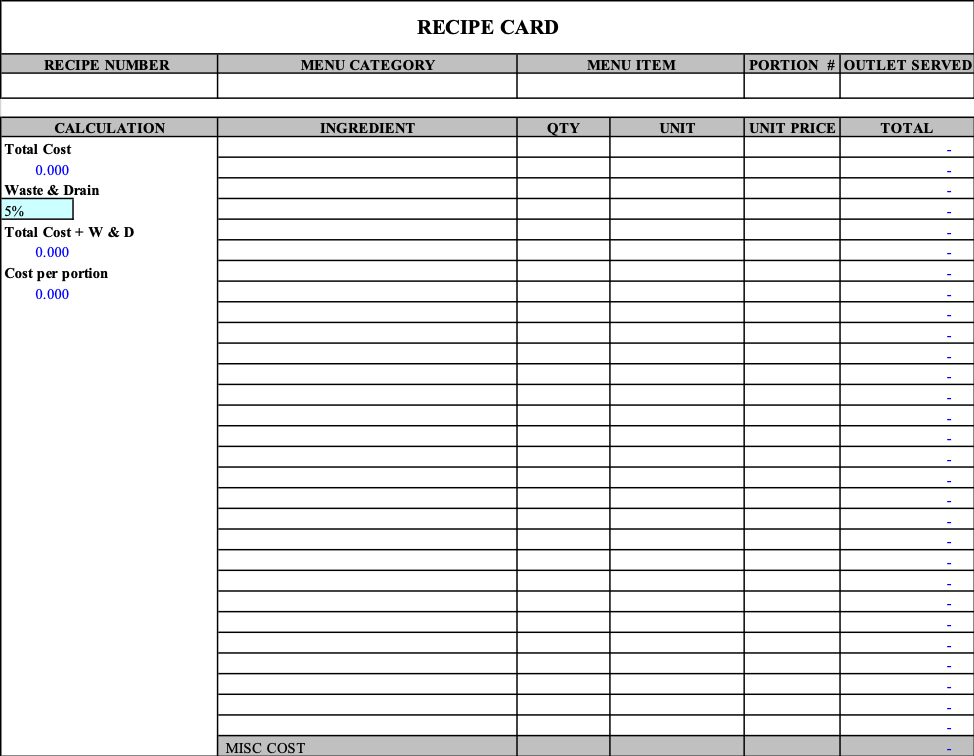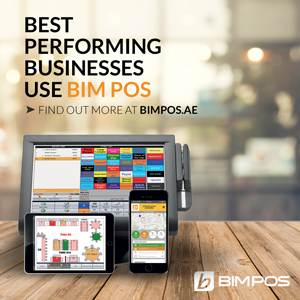A standard recipe card is a tool to help chefs and restaurant owners be aware of the cost of each item on the restaurant menu. The average of all the costs per dish will give you the outlets potential cost. This is an important tool to measure the food cost. Once this is in place, later, through menu engineering the popularity of each dish can be established. Knowing the yield of a particular item is very important while creating recipes.
An ideal standard recipe card should have the following:
Recipe number
This number can correlate to the dish on the master sheet which we will create later.
Menu category
This refers to the section in which a particular menu item belongs to. Menus are normally divided into snacks, appetizers, soups, main course and dessert. I like to create separate excel sheets for each menu category
Menu item
The name of the dish itself.
Portions
This is an important section as a lot of people forget to update this. I encourage all chefs/managers to make recipes based on ten portions. Cooking is skill based and in large food establishments, the skill varies. Hence doing portions based on ten portions gives you a more accurate representation of ground realities.
Outlet served
This is normally for hotels which have a number of food and beverage outlets. It is the name of the outlet a particular item is served in.
Ingredient
This is a detailed list of all the items which go into making a dish.
Quantity
Knowing the yield of a particular item is very important while creating recipes
Eg. If you use 300g of peppers for ten portions in a specific cut which has a lot of wastage and you are actually using 600g of peppers to get that cut, the amount to be entered will be 600g.
Unit
This is the unit of measurement of the said item. The packaging of food items vary hence it is essential to maintain unit uniformity. I prefer using all the units as kilograms for solids and litres for liquids.
Unit price
Because of various packaging. There will be a difference in cost. Make sure to make all of this uniform or to insert the current unit and unit price.
Total
This is the total cost of the ingredient in the preparation of that dish. It is calculated by multiplying unit price into quantity.
Miscellaneous cost
This is miscellaneous cost which you add to the recipe to account for other factors during operations which you may have forgotten to add. Salt while blanching, spices while cooking, etc.
Total cost
This is the sum of all the prices in the total column.
Waste and drain
A normal 5% of the total cost is calculated as cooking loss, thawing loss, waste, drain of frozen items, etc.
Cost per portion
Cost per portion is the total cost plus 5% waste and drain divided by the number of portions the dish is costed for cost.
Method of preparation can be added below the recipes to standardize it for all team members and ensure consistency.
Master Sheet
The master sheet includes recipe number, name of the dish, cost per portion, proposed selling price, all taxes, selling price after tax and cost percentage of the dish. The average of all the costs will give you the potential cost of an outlet.

















